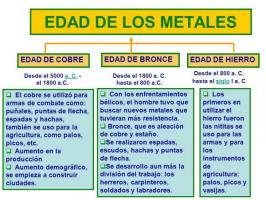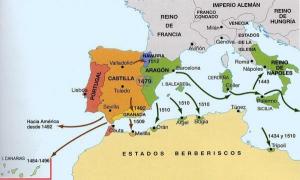Romanesque art in the Middle Ages
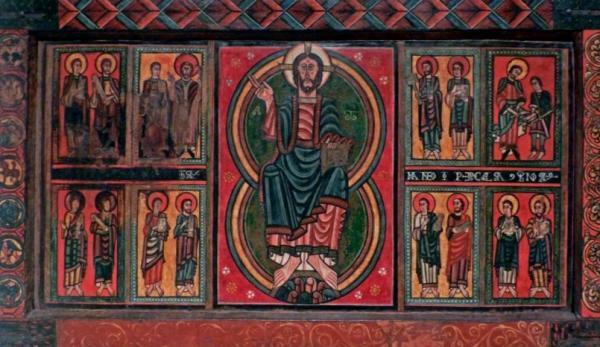
Image: EncicloArte.com
During the S XI-XIII we will find a new art throughout Europe. We have to keep in mind that it is a purely christian art, that is, we will find it assimilated to church buildings although its characteristics could be assimilated in other civil buildings of the time. The most interesting thing about said art is that each nation or kingdom made this artistic trend its own and therefore we cannot mention any country above the other. Thus, the most important kingdoms in which this art occurred will be: Spain, Italy, France and Germany. In this lesson from a TEACHER we will dwell on the main characteristics, the chronological range and some examples of the Romanesque art in the Middle Ages.
Index
- The beginnings of Romanesque art
- Characteristics of Romanesque architecture
- Sculpture in the Romanesque
- Painting during the Romanesque
The beginnings of Romanesque art.
The appearance of this new artistic trend is closely linked to a series of religious reforms
that had just been carried out in the bosom of the Catholic Church, thus appearing the religious orders of Cluny and that of the Cistercian that During the Middle Ages they were the great builders of monasteries, enclosures where all the knowledge and much of the wealth of the kingdoms.We will find the first constructions in Lombardy, Burgundy and Normandy and from there it spread throughout Europe quite quickly thanks to elements such as the following:
- Religious orders (mentioned above) was one of the biggest elements for the expansion, because they were great builders of religious buildings.
- Pilgrimages: From the 11th century on, we will find a great interest in expanding towards holy places, such as Jerusalem. In this way, the three routes of direct expansion of said art were: Santiago de Compostela, Rome and Jerusalem. It is therefore inevitable to see that around these great foci and along all its main roads a large number of buildings with these characteristics.
- The influence of the Church Within society it was the other very important element for the expansion of the artistic trend.
In this other lesson from a TEACHER we will discover the ages of history so you can understand how our history is traditionally divided.
Characteristics of Romanesque architecture.
Within the Romanesque art in the Middle Ages, the cultivation of architecture stood out, one of the best kept treasures of this time. Here we discover some of the most outstanding characteristics of this artistic movement:
- Use of the semicircular arch
- The floors, walls and capitals and ceilings made of stone.
- Headboards adorned with bows and bands.
- Barrel vault (great innovation).
- Wide naves with many pillars and thick walls for support.
- Sculptures on the facades and on the capitals, in which themes from the Apocalypse or the Pantocrator were represented, among other elements.
- Half-point flared windows, which let in very little light (usually had an alabaster plate), this made that they were very dark buildings, which amazed everyone who entered, due to the sculptures and paintings that were in the inside.
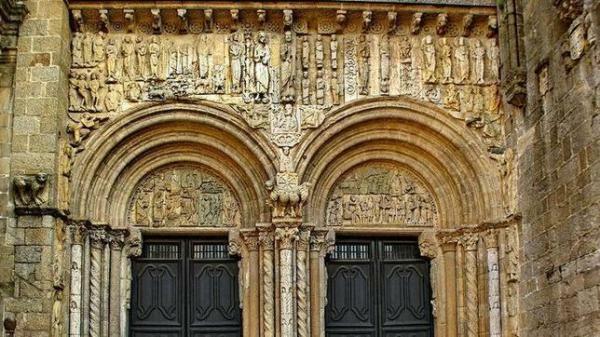
Image: Totenart
Sculpture in the Romanesque.
One of the main objectives that the Church set for itself during this time was the indoctrination of the faithful. It must be taken into account that at this time the vast majority of the population (even among the nobility) was illiterate, leaving the great foci of knowledge practically in the hands of the monks.
It was because of this that A way was devised to bring the Holy Scriptures to the people, the most appropriate being sculpture, which also had the characteristic that they used to be polychrome (even the facades of the Churches, such as the Portico of Glory of Santiago de Compostela). In this way it would also adorn the Churches.
We will see an evolution within this (as happened in Greek sculpture) and it was very influenced by the Byzantine, Persian culture and Roman, which we can see in the codices, capitals, facades, caskets or reliquaries and even round images.
The most used materials for this period will be:
- Stone.
- Wood.
- Metals
Painting during the Romanesque.
Within Romanesque art in the Middle Ages, the cultivation of painting also stands out.. As we have mentioned, the main function of the Church during this time was to bring the Word of God to the people, that is why biblical scenes were represented by sculpture or sculpture. painting.
Its main feature will be the great color that they will have and the style of representation, which will remind you of Byzantine art (from which he drank a lot). Although in most cases we do not have many examples left, it must be said that during the Romanesque period, there was a horror vacui, that is, the fear of emptiness, that is why the Churches were completely decorated by paintings, representing biblical themes or themes vegetables.
But what will be represented the most throughout the entire period would be the Pantocrator o God in Majesty and the Virgin seated with the child o Theotokos.
The main characteristics were:
- Hieratic figures.
- Represented frontally and juxtaposed.
- Made al fresco.
We can find the paintings on different supports:
- Wall paintings: As we have mentioned previously, there are not many remains of these highly decorated Churches, but a clear example of this we will find in the Pantheon of the Kings of León.
- In manuscripts or codices: These books became very important, due to the reforms carried out in the monastic orders, which saw the need to put their rules in writing. In this way we will find very ornate codices, in which the lives of the saints were told, in addition to representing biblical or even vegetable themes.
- On board or wood: here we can find altar fronts, crucifixes or representations of the Theotokos, all of these richly adorned.
- Stained glass windows: It was the moment by which this type of art began to be worked more, although there are few examples that remain, because with the arrival of the Gothic, they were being changed by the new shapes.
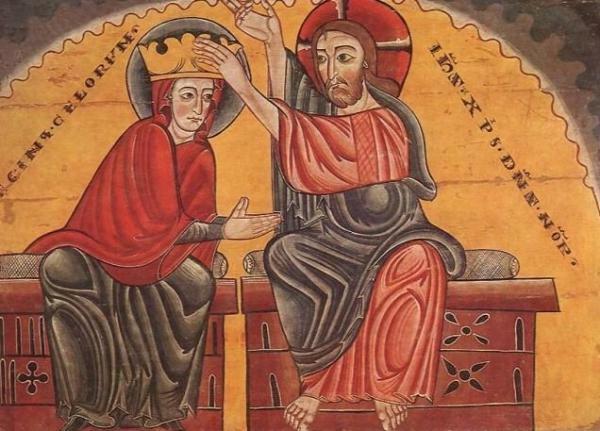
Image: artelibertador
If you want to read more articles similar to Romanesque art in the Middle Ages, we recommend that you enter our category of Story.

